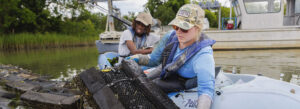@font-face {font-family:"Cambria Math"; panose-1:2 4 5 3 5 4 6 3 2 4; mso-font-charset:0; mso-generic-font-family:roman; mso-font-pitch:variable; mso-font-signature:-536870145 1107305727 0 0 415 0;}@font-face {font-family:Calibri; panose-1:2 15 5 2 2 2 4 3 2 4; mso-font-charset:0; mso-generic-font-family:swiss; mso-font-pitch:variable; mso-font-signature:-536859905 -1073732485 9 0 511 0;}p.MsoNormal, li.MsoNormal, div.MsoNormal {mso-style-unhide:no; mso-style-qformat:yes; mso-style-parent:""; margin:0in; mso-pagination:widow-orphan; font-size:12.0pt; font-family:"Calibri",sans-serif; mso-ascii-font-family:Calibri; mso-ascii-theme-font:minor-latin; mso-fareast-font-family:Calibri; mso-fareast-theme-font:minor-latin; mso-hansi-font-family:Calibri; mso-hansi-theme-font:minor-latin; mso-bidi-font-family:"Times New Roman"; mso-bidi-theme-font:minor-bidi;}.MsoChpDefault {mso-style-type:export-only; mso-default-props:yes; font-family:"Calibri",sans-serif; mso-ascii-font-family:Calibri; mso-ascii-theme-font:minor-latin; mso-fareast-font-family:Calibri; mso-fareast-theme-font:minor-latin; mso-hansi-font-family:Calibri; mso-hansi-theme-font:minor-latin; mso-bidi-font-family:"Times New Roman"; mso-bidi-theme-font:minor-bidi;}div.WordSection1 {page:WordSection1;}
Fellow monitors water quality for brook trout swimming upstream
More than 600 streams in Virginia serve as pathways for brook trout, which navigate to cold, high-elevation waters when they spawn in the fall. Brook trout, Virginia’s only native trout species, are the canary in the coal mine for warming streams. Newly hatched fish need water below about 70 degrees to survive. Temperatures warmer than that can stress adult fish, too, since brook trout are a coldwater species.
“The hotter the water is, the less oxygen it can hold, and that can be a real problem for fish,” said Nicki Gustafson, a Commonwealth Coastal & Marine Policy Fellow.
That’s why Gustafson created a continuous monitoring program for 37 streams throughout Virginia as part of her fellowship with the Virginia Department of Environmental Quality. Many of these streams are considered too hot, or “temperature impaired,” by DEQ standards. But with more than 2,000 miles of brook trout streams scattered across the state, it’s a challenge for DEQ staff to travel and sample each one.
That means many streams may only be sampled a handful of times each year, mostly by sticking a thermometer in the water, taking the reading, and moving on. These sparse water quality readings can’t give the full picture of stream health, since temperature fluctuates throughout the day and across seasons.
“We might be missing stuff because of when we’re going out, and we also might be impairing waters that aren’t actually impaired,” Gustafson said. “Then we’re not putting energy into the places that need it most.”
For a stream to be labeled as impaired, only 10 percent of the readings need to register as too warm. This means that a stream sampled 12 times would only need two or three readings above the temperature limit to be labeled as impaired. Once a stream is impaired, it is added to the Environmental Protection Agency’s list of impaired streams. The stream can be removed from the list after the DEQ collects data showing that the stream temperature is no longer impaired.
To better understand the water temperature in these streams, Gustafson set up water quality instruments that sit in the stream for a week, collecting the temperature, oxygen levels, and pH of the water every 15 minutes. She measured the streams’ water in both the summer and the winter to get an idea of changes between seasons. The state standards only require once-an-hour measuring, according to Rob Breeding, Gustafson’s fellowship mentor at the DEQ.
“Fifteen-minute intervals is already a pretty big dataset for continuous monitoring over the week,” Breeding said. “It’s frequent enough to see if you have any weird little things happening in the water that may be masked if you’re only taking once-an-hour data.”
Some of the more vulnerable streams Gustafson monitored were near old industrial sites or near larger cities like Roanoke. Other more remote streams up in the mountains are shaded by tree canopy and are less susceptible to human impacts.
We might be missing stuff because of when we’re going out, and we also might be impairing waters that aren’t actually impaired,” Gustafson said.
The model will allow others at the DEQ to identify which streams are truly temperature-impaired, and which streams may be more vulnerable to climate change.
Using the information collected from these streams, Gustafson built a model that shows the relationship between stream temperature and factors like tree cover. The model will allow DEQ staff to identify which streams are truly temperature-impaired, and which streams may be more vulnerable to climate change. Then, monitoring staff can give those streams high consideration in their sampling schedules — and de-prioritize streams that aren’t likely to be temperature impaired.
“If it’s discovered that some of these high temperatures are in the headwaters where there’s almost complete forest cover and no obvious human impacts, that would potentially help us tease out which impairments in the future are probably human-caused, and which are because of natural causes,” Breeding said.
In cases where streams are too warm to support fish, the agency could plant trees nearby the stream. The trees’ shade cover would help lower water temperatures in areas where brook trout migrate and spawn. Although it’s not feasible to protect all streams, Gustafson’s model will help the agency focus its efforts where they are most needed.
“We are hoping to use it to manage the temperature list and target areas for research,” Gustafson said. “The model can provide evidence for streams that we think are maybe not in trouble, or to target streams for monitoring that we might be able to do some work on.”
Takeaways:
- Nicki Gustafson created a continuous monitoring program for 37 Virginia streams that are temperature impaired, meaning they cannot support coldwater fish like brook trout.
- In the past, limited Department of Environmental Quality monitoring could not give the full picture of stream health, since temperature fluctuates during the day and across seasons.
- Gustafson’s monitoring and model will help her host office identify which streams are temperature impaired and prioritize them for additional sampling and conservation.
Photos and video by Aileen Devlin | Virginia Sea Grant
Story by Madeleine Jepsen | Virginia Sea Grant
Published Sept. 13 , 2021.
“That would potentially help us tease out which impairments in the future are probably human-caused, and which are because of natural causes,” Breeding said.





